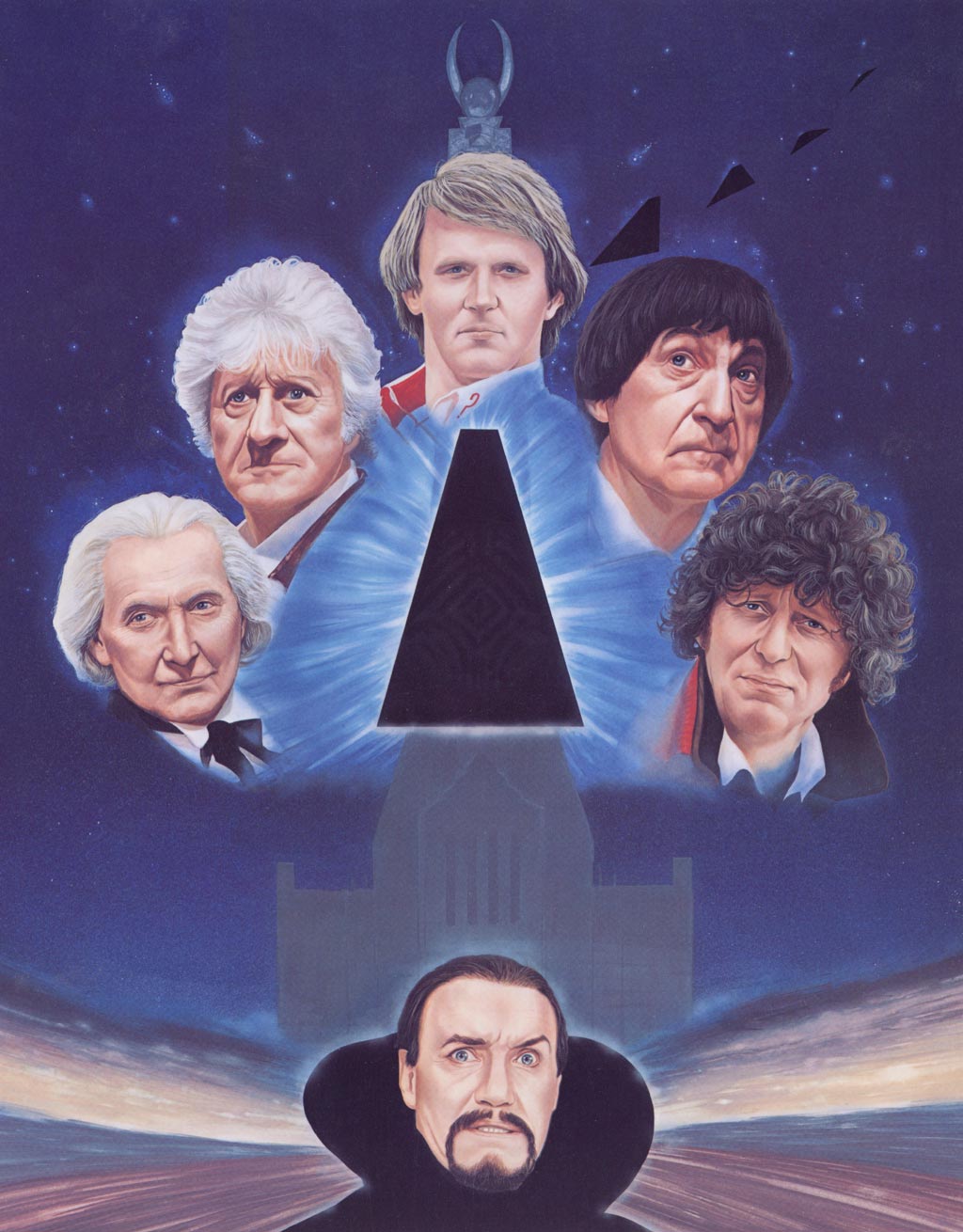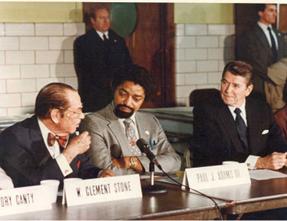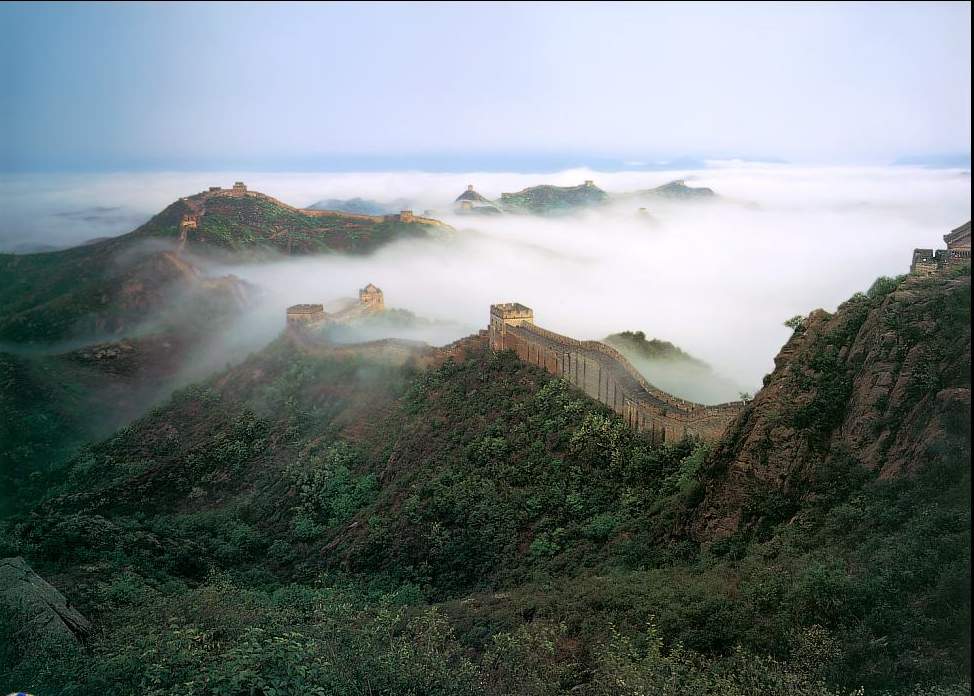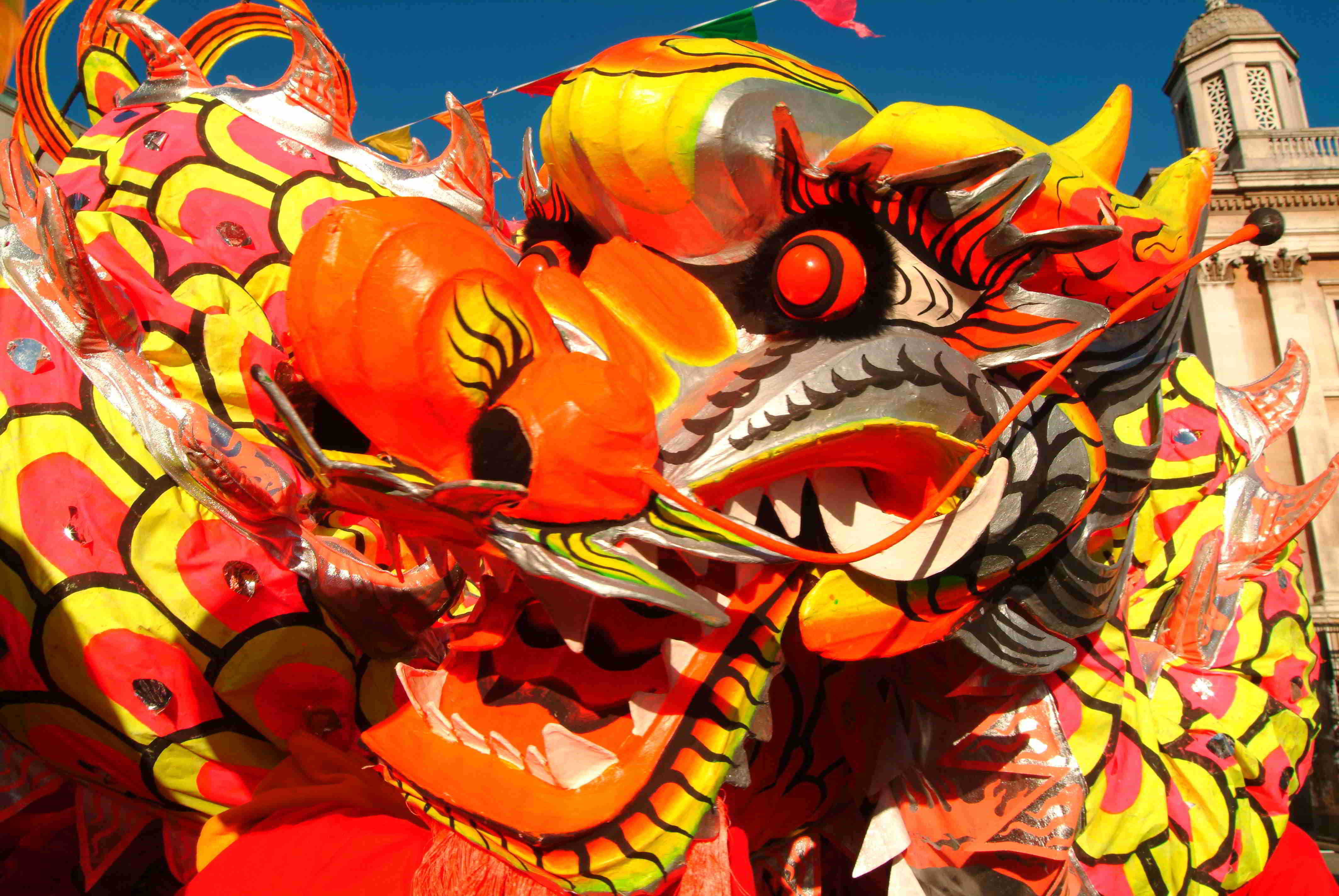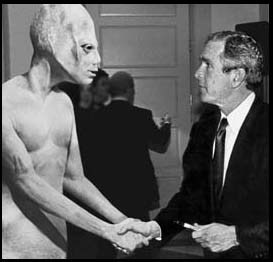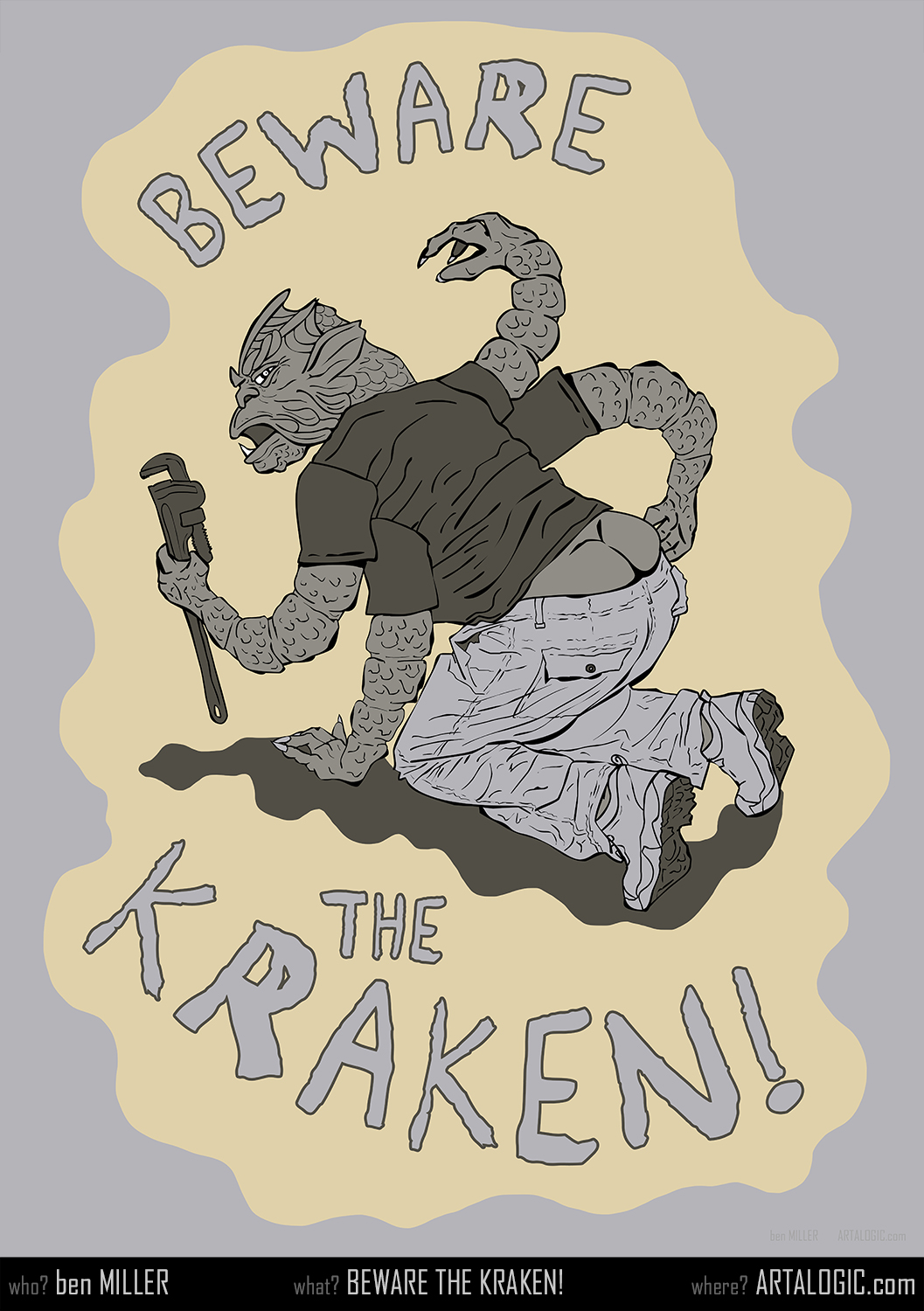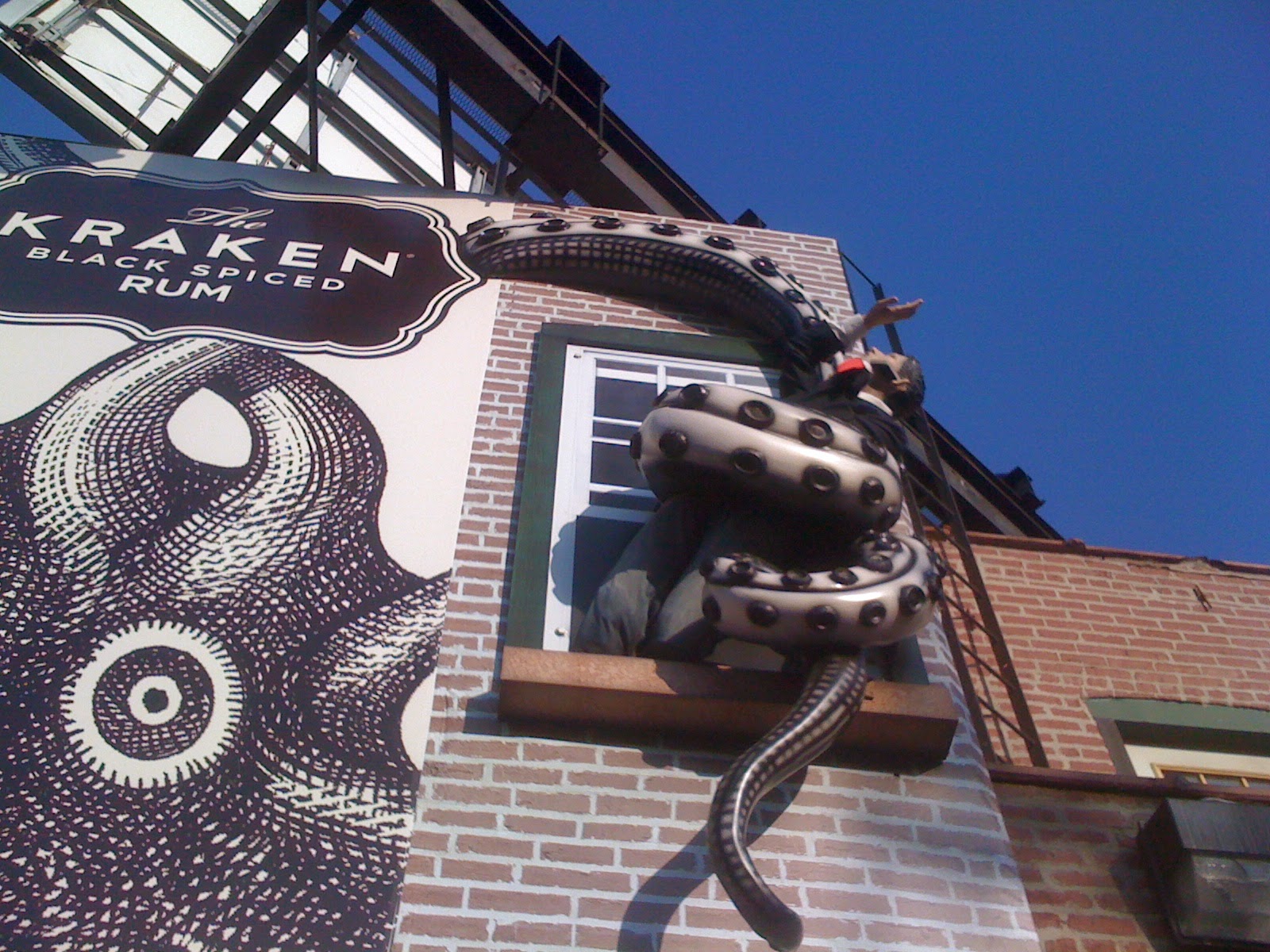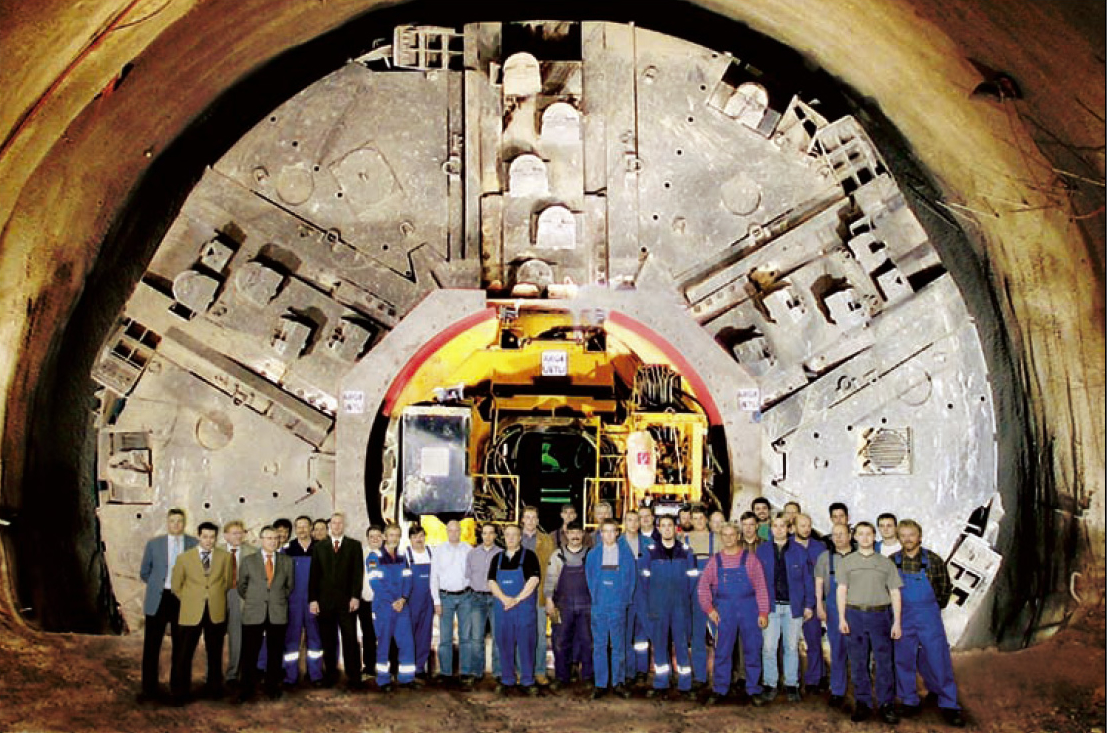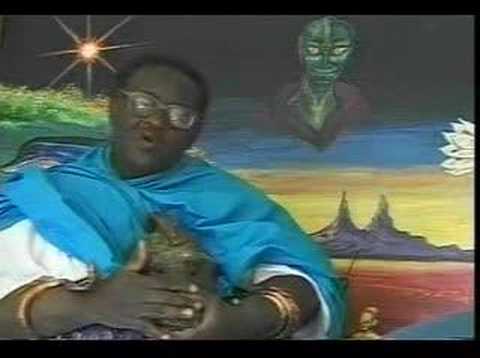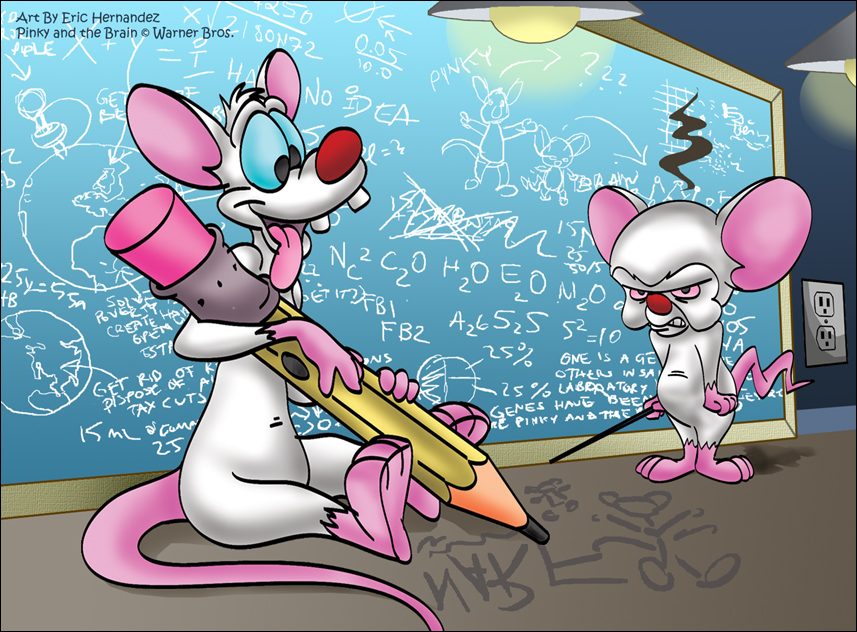http://en.wikipedia.org/wiki/Russia Language
Russia's 160 ethnic groups speak some 100 languages.[8] According to the 2002 Census, 142.6 million people speak Russian, followed by Tatar with 5.3 million and Ukrainian with 1.8 million speakers.[201] Russian is the only official state language, but the Constitution gives the individual republics the right to make their native language co-official next to Russian.[202]
Despite its wide dispersal, the Russian language is homogeneous throughout Russia. Russian is the most geographically widespread language of Eurasia and the most widely spoken Slavic language.[203] It belongs to the Indo-European language family and is one of the living members of the East Slavic languages; the others being Belarusian and Ukrainian (and possibly Rusyn). Written examples of Old East Slavic (Old Russian) are attested from the 10th century onwards.[204]
Russian is one of the six official languages of the UN.[205]
Religion
Orthodox Christianity, Islam, Judaism and Buddhism are Russia’s traditional religions, legally a part of Russia's "historical heritage".[206] The Russian Orthodox Church was the country's state religion prior to the Revolution and remains the largest religious body in the country. Estimates of believers widely fluctuate among sources, and some reports put the number of non-believers in Russia at 16–48% of the population.[207]
Easter is the most popular religious festival in Russia, celebrated by more than 90% of all Russian citizens, including large number of non-religious. More than three-fourth of the Russians celebrate Easter by making traditional Easter cakes, coloured eggs and paskha.[208]
Traced back to the Christianization of Kievan Rus' in the 10th century, Russian Orthodoxy is the dominant religion in the country; approximately 100 million citizens consider themselves Russian Orthodox Christians.[209] 95% of the registered Orthodox parishes belong to the Russian Orthodox Church while there are a number of smaller Orthodox Churches.[210] However, the vast majority of Orthodox believers do not attend church on a regular basis. Smaller Christian denominations such as Catholics, Armenian Gregorians, and various Protestant churches also exist.
Estimates of the number of Muslims in Russia range from 7–9 million by the local sources to 15–20 million by Western and Islamic sources.[211] Also there are 3 to 4 million temporary Muslim migrants from the post-Soviet states.[212] Most Muslims live in the Volga-Ural region, as well as in the Caucasus, Moscow, St. Petersburg and Western Siberia.[213]
Buddhism is traditional for three regions of the Russian Federation: Buryatia, Tuva, and Kalmykia. Some residents of the Siberian and Far Eastern regions, such as Yakutia and Chukotka, practice shamanist, pantheistic, and pagan rites, along with the major religions. Induction into religion takes place primarily along ethnic lines. Slavs are overwhelmingly Orthodox Christian, Turkic speakers are predominantly Muslim, and Mongolic peoples are Buddhists.[214]
Health
The Russian Constitution guarantees free, universal health care for all citizens.[215] In practice, however, free health care is partially restricted due to mandatory registration.[216] While Russia has more physicians, hospitals, and health care workers than almost any other country in the world on a per capita basis,[217] since the dissolution of the Soviet Union the health of the Russian population has declined considerably as a result of social, economic, and lifestyle changes;[218] the trend has been reversed only in the recent years, with average life expectancy having increased 2.4 years for males and 1.4 years for females between 2006–09.[190]
As of 2009, the average life expectancy in Russia was 62.77 years for males and 74.67 years for females.[219] The biggest factor contributing to the relatively low male life expectancy for males is a high mortality rate among working-age males from preventable causes (e.g., alcohol poisoning, smoking, traffic accidents, violent crime).[190] As a result of the large gender difference in life expectancy and because of the lasting effect of high casualties in World War II, the gender imbalance remains to this day and there are 0.859 males to every female.[83]
Education
Russia has a free education system guaranteed to all citizens by the Constitution,[220] however an entry to subsidized post-secondary education is highly competitive.[221] As a result of great emphasis on science and technology in education, Russian medical, mathematical, scientific, and aerospace research is generally of a high order.[222]
Since 1990 the 11-year school training has been introduced. Education in state-owned secondary schools is free; first tertiary (university level) education is free with reservations: a substantial share of students is enrolled for full pay (many state institutions started to open commercial positions in the last years).[223]
In 2004 state spending for education amounted to 3.6% of GDP, or 13% of consolidated state budget.[224] The Government allocates funding to pay the tuition fees within an established quota or number of students for each state institution. In the higher education institutions, students are paid a small stipend and provided with free housing.[225]
The oldest and largest Russian universities are Moscow State University and Saint Petersburg State University. In 2000s, in order to create higher education and research institutions of comparable scale in the Russian regions, the government launched the program of establishing the federal universities, mostly by merging the existing large regional universities and research institutes and providing them with a special funding. These new institutions include Southern Federal University, Siberian Federal University, Kazan Volga Federal University, North-Eastern Federal University and Far Eastern Federal University.
Culture
There are over 160 different ethnic groups and indigenous peoples in Russia.[186] Ethnic Russians with their Slavic Orthodox traditions, Tatars and Bashkirs with their Turkic Muslim culture, Buddhist nomadic Buryats and Kalmyks, Shamanistic peoples of the Extreme North and Siberia, highlanders of the Northern Caucasus, Finno-Ugric peoples of the Russian North West and Volga Region all contribute to the cultural diversity of the country.
Handicraft, like Dymkovo toy, khokhloma, gzhel and palekh miniature represent an important aspect of Russian folk culture. Ethnic Russian clothes include kaftan, kosovorotka and ushanka for men, sarafan and kokoshnik for women, with lapti and valenki as common shoes. The clothes of Cossacks from Southern Russia include burka and papaha, which they share with the peoples of the Northern Caucasus.
Russian cuisine widely uses fish, poultry, mushrooms, berries, and honey. Crops of rye, wheat, barley, and millet provide the ingredients for various breads, pancakes and cereals, as well as for kvass, beer and vodka drinks. Black bread is rather popular in Russia, compared to the rest of the world. Flavourful soups and stews include shchi, borsch, ukha, solyanka and okroshka. Smetana (a heavy sour cream) is often added to soups and salads. Pirozhki, blini and syrniki are native types of pancakes. Chicken Kiev, pelmeni and shashlyk are popular meat dishes, the last two being of Tatar and Caucasus origin respectively. Other meat dishes include stuffed cabbage rolls (golubtsy) usually filled with meat.[226] Salads include Russian salad, vinaigrette and Dressed Herring.
Russia's large number of ethnic groups have distinctive traditions of folk music. Typical ethnic Russian musical instruments are gusli, balalaika, zhaleika and garmoshka. Folk music had great influence on Russian classical composers, and in modern times it is a source of inspiration for a number of popular folk bands, including Melnitsa. Russian folk songs, as well as patriotic Soviet songs, constitute the bulk of repertoire of the world-renown Red Army choir and other popular ensembles.
Russians have many traditions, including the washing in banya, a hot steam bath somewhat similar to sauna.[44] Old Russian folklore takes its roots in the pagan Slavic religion. Many Russian fairy tales and epic bylinas were adaptated for animation films, or for feature movies by the prominent directors like Aleksandr Ptushko (Ilya Muromets, Sadko) and Aleksandr Rou (Morozko, Vasilisa the Beautiful). Russian poets, including Pyotr Yershov and Leonid Filatov, made a number of well-known poetical interpretations of the classical fairy tales, and in some cases, like that of Alexander Pushkin, also created fully original fairy tale poems of great popularity.
Architecture
Since the Christianization of Kievan Rus' for several ages Russian architecture was influenced predominantly by the Byzantine architecture. Apart from fortifications (kremlins), the main stone buildings of ancient Rus' were Orthodox churches with their many domes, often gilded or brightly painted.
Aristotle Fioravanti and other Italian architects brought Renaissance trends into Russia since the late 15th century, while the 16th century saw the development of unique tent-like churches[227] culminating in Saint Basil's Cathedral. By that time the onion dome design was also fully developed.[228] In the 17th century, the "fiery style" of ornamentation flourished in Moscow and Yaroslavl, gradually paving the way for the Naryshkin baroque of the 1690s. After the reforms of Peter the Great the change of architectural styles in Russia generally followed that in the Western Europe.
The 18th-century taste for rococo architecture led to the ornate works of Bartolomeo Rastrelli and his followers. The reigns of Catherine the Great and her grandson Alexander I saw the flourishing of Neoclassical architecture, most notably in the capital city of Saint Petersburg. The second half of the 19th century was dominated by the Neo-Byzantine and Russian Revival styles. Prevalent styles of the 20th century were the Art Nouveau, Constructivism, and the Stalin Empire style.
In 1955, a new Soviet leader, Nikita Khrushchev, condemned the "excesses" of the former academic architecture,[229] and the late Soviet era was dominated by plain functionalism in architecture. This helped somewhat to resolve the housing problem, but created a large quantity of buildings of low architectural quality, much in contrast with the previous bright styles. The situation improved in the recent two decades. Many temples demolished in Soviet times were rebuilt, and this process continues along with the restoration of various historical buildings destroyed in World War II. A total of 23,000 Orthodox churches have been rebuilt between 1991–2010, which effectively quadrapled the number of operating churches in Russia.[230]
Visual arts
Early Russian painting is represented in icons and vibrant frescos, the two genres inherited from Byzantium. As Moscow rose to power, Theophanes the Greek, Dionisius and Andrei Rublev became vital names associated with a distinctly Russian art.
The Russian Academy of Arts was created in 1757[231] and gave Russian artists an international role and status. Ivan Argunov, Dmitry Levitzky, Vladimir Borovikovsky and other 18th century academicians mostly focused on portrait painting. In the early 19th century, when neoclassicism and romantism flourished, mythological and Biblical themes inspired many prominent painings, notably by Karl Briullov and Alexander Ivanov.
In the mid-19th century the Peredvizhniki (Wanderers) group of artists broke with the Academy and initiated a school of art liberated from academic restrictions.[232] These were mostly realist painters who captured Russian identity in landscapes of wide rivers, forests, and birch clearings, as well as vigorous genre scenes and robust portraits of their contemporaries. Some artists focused on depicting dramatic moments in Russian history, while others turned to social criticism, showing the conditions of the poor and caricaturing authority; critical realism flourished under the reign of Alexander II. Leading realists include Ivan Shishkin, Arkhip Kuindzhi, Ivan Kramskoi, Vasily Polenov, Isaac Levitan, Vasily Surikov, Viktor Vasnetsov, Ilya Repin and Boris Kustodiev.
The turn of the 20th century saw the rise of symbolist painting, represented by Mikhail Vrubel, Kuzma Petrov-Vodkin and Nicholas Roerich.
The Russian avant-garde was a large, influential wave of modernist art that flourished in Russia from approximately 1890 to 1930. The term covers many separate, but inextricably related, art movements that occurred at the time; namely neo-primitivism, suprematism, constructivism, rayonism, and Russian Futurism. Notable artists from this era include El Lissitzky, Kazimir Malevich, Wassily Kandinsky, and Marc Chagall. Since 1930s the revolutionary ideas of the avant-garde clashed with the newly emerged conservative direction of socialist realism.
Soviet art produced works that were furiously patriotic and anti-fascist during and after the Great Patriotic War. Multiple war memorials, marked by a great restrained solemnity, were built throughout the country. Soviet artists often combined innovation with socialist realism, notably the sculptors Vera Mukhina, Yevgeny Vuchetich and Ernst Neizvestny.
Music and dance
Music in 19th century Russia was defined by the tension between classical composer Mikhail Glinka along with other members of The Mighty Handful, who embraced Russian national identity and added religious and folk elements to their compositions, and the Russian Musical Society led by composers Anton and Nikolay Rubinsteins, which was musically conservative. The later tradition of Pyotr Ilyich Tchaikovsky, one of the greatest composers of the Romantic era, was continued into the 20th century by Sergei Rachmaninoff.[233] World-renown composers of the 20th century included also Alexander Scriabin, Igor Stravinsky, Sergei Prokofiev, Dmitri Shostakovich and Alfred Schnittke.
Russian conservatories have turned out generations of famous soloists. Among the best known are violinists David Oistrakh and Gidon Kremer; cellist Mstislav Rostropovich; pianists Vladimir Horowitz, Sviatoslav Richter, and Emil Gilels; and vocalists Fyodor Shalyapin, Galina Vishnevskaya, Anna Netrebko and Dmitry Hvorostovsky.[234]
During the early 20th century, Russian ballet dancers Anna Pavlova and Vaslav Nijinsky rose to fame, and impresario Sergei Diaghilev and his Ballets Russes' travels abroad profoundly influenced the development of dance worldwide.[235] Soviet ballet preserved the perfected 19th century traditions,[236] and the Soviet Union's choreography schools produced many internationally famous stars, including Maya Plisetskaya, Rudolf Nureyev, and Mikhail Baryshnikov. The Bolshoi Ballet in Moscow and the Mariinsky Ballet in St Petersburg remain famous throughout the world.[237]
Modern Russian rock music takes its roots both in the Western rock and roll and heavy metal, and in traditions of the Russian bards of the Soviet era, like Vladimir Vysotsky and Bulat Okudzhava.[238] Popular Russian rock groups include Mashina Vremeni, DDT, Aquarium, Alisa, Kino, Kipelov, Nautilus Pompilius, Aria, Grazhdanskaya Oborona, Splean and Korol i Shut. Russian pop music developed from what was known in the Soviet times as estrada into full-fledged industry, with some performers gaining wide international recognition, like t.A.T.u. and Vitas.
Literature and philosophy
In the 18th century, during the era of Russian Enlightenment, the development of Russian literature was boosted by the works of Mikhail Lomonosov and Denis Fonvizin, and by the early 19th century a modern native tradition had emerged, producing some of the greatest writers of all time. This period, known also as the Golden Age of Russian Poetry, began with Alexander Pushkin, who is considered the founder of modern Russian literary language and often described as the "Russian Shakespeare".[239] It continued into the 19th century with the poetry of Mikhail Lermontov and Nikolay Nekrasov, dramas of Alexander Ostrovsky and Anton Chekhov, and the prose of Nikolai Gogol and Ivan Turgenev. Leo Tolstoy and Fyodor Dostoyevsky in particular were titanic figures to the point that many literary critics have described one or the other as the greatest novelist of all time.[240][241]
By the 1880s the age of the great novelists was over, while short fiction and poetry became the dominant genres. The next several decades became known as the Silver Age of Russian Poetry, when the previously dominant literary realism was replaced by symbolism. Leading authors of this era include poets Valery Bryusov, Vyacheslav Ivanov, Alexander Blok, Nikolay Gumilev and Anna Akhmatova, and novelists Leonid Andreyev, Ivan Bunin, and Maxim Gorky.
Russian philosophy blossomed since the 19th century, when it was defined initially by the opposition of Westernizers, advocating the Western political and economical models, and Slavophiles, insisting on developing Russia as unique civilization. The latter group includes Nikolai Danilevsky and Konstantin Leontiev, the founders of eurasianism. In its further development Russian philosophy was always marked by deep connection to literature and interest in creativity, society, politics and nationalism; Russian cosmism and religious philosophy were other major areas. Notable philosophers of the late 19th and the early 20th centuries include Vladimir Solovyev, Sergei Bulgakov, and Vladimir Vernadsky.
Following the Russian Revolution of 1917 many prominent writers and philosophers left the country, including Ivan Bunin, Vladimir Nabokov and Nikolay Berdyayev, while a new generation of talented authors joined together in an effort to create a distinctive working-class culture appropriate for the new Soviet state. In the 1930s censorship over literature was tightened in line with the policy of socialist realism. Since late 1950s the restrictions on literature were eased, and by the 1970s and 1980s, writers were increasingly ignoring the official guidelines. The leading authors of the Soviet era include novelists Yevgeny Zamyatin, Ilf and Petrov, Mikhail Bulgakov and Mikhail Sholokhov, and poets Vladimir Mayakovsky, Yevgeny Yevtushenko, and Andrey Voznesensky.
Cinema, animation and media
Russian and later Soviet cinema was a hotbed of invention in the period immediately following the 1917, resulting in world-renowned films such as The Battleship Potemkin by Sergei Eisenstein.[242] Eisenstein was a student of filmmaker and theorist Lev Kuleshov, who developed the Soviet montage theory of film editing at the world's first film school, the All-Union Institute of Cinematography. Dziga Vertov, whose kino-glaz (“film-eye”) theory—that the camera, like the human eye, is best used to explore real life—had a huge impact on the development of documentary film making and cinema realism. The subsequent state policy of socialist realism somewhat limited creativity, however many Soviet films in this style were artistically successful, like Chapaev, The Cranes Are Flying, and Ballad of a Soldier.[242]
1960s and 1970s saw a greater variety of artistic styles in the Soviet cinema. Eldar Ryazanov's and Leonid Gaidai's comedies of that time were immensely popular, with many of the catch phrases still in use today. In 1961–68 Sergey Bondarchuk directed an Oscar-winning film adaptation of Leo Tolstoy's epic War and Peace, which was the most expensive film ever made.[243] In 1969, Vladimir Motyl's White Sun of the Desert was released, a very popular film in a genre of ostern; the film is traditionally watched by cosmonauts before any trip into space.[244]
Russian animation dates back to the late Russian Empire times. During Soviet era, Soyuzmultfilm studio was the largest animation producer. Soviet animators developed a great variety of pioneering techniques and aesthetic styles, with prominent directors including Ivan Ivanov-Vano, Fyodor Khitruk and Aleksandr Tatarsky. Many Soviet cartoon heroes, such as the Russian-style Winnie-the-Pooh, cute little Cheburashka, Wolf and Hare from Nu, Pogodi! are iconic images in Russia and many surrounding countries.
The late 1980s and 1990s were a period of crisis in Russian cinema and animation. Although Russian filmmakers became free to express themselves, state subsidies were drastically reduced, resulting in fewer films produced. The early years of the 21st century have brought increased viewership and subsequent prosperity to the industry on the back of the economic revival. Production levels are already higher than in Britain and Germany.[245] Russia's total box-office revenue in 2007 was $565 million, up 37% from the previous year[246] In 2002 the Russian Ark became the first feature film ever to be shot in a single take. The traditions of Soviet animation were developed recently by such directors as Aleksandr Petrov and studios like Melnitsa Animation.
Russia was among the first countries to introduce radio and television. While there were few channels in the Soviet time, in the past two decades many new state and private-owned radio stations and TV channels appeared. In 2005 a state-run English language Russia Today TV started broadcasting, and its Arabic version Rusiya Al-Yaum was launched in 2007.
Sports
Combining the total medals of Soviet Union and Russia, the country is second among all nations by number of gold medals both at the Summer Olympics and at the Winter Olympics. Soviet and later Russian athletes have always been in the top three for the number of gold medals collected at the Summer Olympics. Soviet gymnasts, track-and-field athletes, weight lifters, wrestlers, boxers, fencers, shooters, cross country skiers, biathletes, speed skaters and figure skaters were consistently among the best in the world, along with Soviet basketball, handball, volleyball and ice hockey players.[247] The 1980 Summer Olympics were held in Moscow while the 2014 Winter Olympics will be hosted in Sochi.
Although ice hockey was only introduced during the Soviet era, the national team managed to win gold at almost all the Olympics and World Championships they contested. Russian players Valery Kharlamov, Sergey Makarov, Vyacheslav Fetisov and Vladislav Tretiak hold four of six positions in the IIHF Team of the Century.[248] Recently Russia won the 2008, 2009 and the 2012 IIHF World Championships, overtaking Canada as the world's top ranked ice hockey team.[249] Russia totally dominated the 2012 tournament, winning all of its ten matches—the first time any team had done so since the Soviet Union in 1989.[250] The Kontinental Hockey League (KHL) was founded in 2008 as a successor to the Russian Superleague. It is seen as a rival to the National Hockey League (NHL) and is ranked the top hockey league in Europe as of 2009.[251] Bandy, also known as Russian hockey, is another traditionally popular ice sport.[252] The Soviet Union won all the Bandy World Championships between 1957–79.[253]
Along with ice hockey and basketball, association football is one of the most popular sports in modern Russia. The Soviet national team became the first ever European Champions by winning Euro 1960. In recent years, Russian football, which downgraded in 1990s, has experienced a revival. Russian clubs CSKA Moscow and Zenit St Petersburg won the UEFA Cup in 2005 and 2008 respectively. The Russian national football team reached the semi-finals of Euro 2008, losing only to the eventual champions Spain. Russia will host the 2018 FIFA World Cup, with 14 host cities located in the European part of the country and on the Urals. In 2007, the Russian national basketball team also won the European Basketball Championship. Russian basketball club PBC CSKA Moscow is one of the top teams in Europe, winning the Euroleague in 2006 and 2008.
Larisa Latynina, who currently holds a record for most Olympic medals won per person and most gold Olympic medals won by a woman, established the USSR as the dominant force in gymnastics for many years to come.[254] Today, Russia is leading in rhythmic gymnastics with Alina Kabayeva, Irina Tschaschina and Yevgeniya Kanayeva. Russian synchronized swimming is the best in the world, with almost all gold medals at Olympics and World Championships having been swept by Russians in recent decades. Figure skating is another popular sport in Russia, especially pair skating and ice dancing. At every Winter Olympics from 1964 until 2006 a Soviet or Russian pair has won gold. Since the end of the Soviet era, tennis has grown in popularity and Russia has produced a number of famous players, including Maria Sharapova, the world's highest paid female athlete.[255] In martial arts, Russia produced the sport Sambo and many renown fighters, like Fedor Emelianenko. Chess is a widely popular pastime in Russia; from 1927, Russian grandmasters have held the world chess championship almost continuously.[256]
Formula One is also becoming increasingly popular in Russia. Renault's Vitaly Petrov is the only Russian Formula One driver to date. There have only ever been two Russian Grands Prix (in 1913 and 1914), but it is set to return for 2014, in a six year deal.[257]
National holidays and symbols
There are seven public holidays in Russia,[258] except those always celebrated on Sunday. Russian New Year traditions resemble those of the Western Christmas, with New Year Trees and gifts, and Ded Moroz (Father Frost) playing the same role as Santa Claus. Orthodox Christmas falls on 7 January, because Russian Orthodox Church still follows the Julian calendar and all Orthodox holidays are 13 days after Catholic ones. Another two major Christian holidays are Easter and Trinity Sunday. Kurban Bayram and Uraza Bayram are celebrated by Russian Muslims.
Further Russian public holidays include Defender of the Fatherland Day (23 February), which honors Russian men, especially those serving in the army; International Women's Day (8 March), which combines the traditions of Mother's Day and Valentine's Day; Spring and Labor Day (1 May); Victory Day (9 May); Russia Day (12 June); and Unity Day (4 November), commemorating the popular uprising which expelled the Polish occupation force from Moscow in 1612.
Victory Day is the second most popular holiday in Russia; it commemorates the victory over Nazism in the Great Patriotic War. A huge military parade, hosted by the President of Russia, is annually organised in Moscow on Red Square. Similar parades took place in all major Russian cities and cities with the status Hero city or City of Military Glory.
Popular non-public holidays include Old New Year (New Year according to Julian Calendar on 14 January), Tatiana Day (students holiday on 25 January), Maslenitsa (an old pagan spring holiday a week before the Great Lent), Cosmonautics Day (in tribute to Yury Gagarin's first ever human trip into space on 12 April), Ivan Kupala Day (another pagan Slavic holiday on 7 July) and Peter and Fevronia Day (taking place on 8 July and being the Russian analogue of Valentine's Day, which focuses, however, on the family love and fidelity).
State symbols of Russia include the Byzantine double-headed eagle, combined with St. George of Moscow in the Russian coat of arms. The Russian flag dates from the late Tsardom of Russia period and has been widely used since the time of the Russian Empire. The Russian anthem shares its music with the Soviet Anthem, though not the lyrics. The imperial motto God is with us and the Soviet motto Proletarians of all countries, unite! are now obsolete and no new motto has replaced them. The hammer and sickle and the full Soviet coat of arms are still widely seen in Russian cities as a part of old architectural decorations. The Soviet Red Stars are also encountered, often on military equipment and war memorials. The Red Banner continues to be honored, especially the Banner of Victory of 1945.
The Matryoshka doll is a recognizable symbol of Russia, while the towers of Moscow Kremlin and Saint Basil's Cathedral in Moscow are main Russia's architectural icons. Cheburashka is a mascot of Russian national Olympic team. St. Mary, St. Nicholas, St. Andrew, St. George, St. Alexander Nevsky, St. Sergius of Radonezh and St. Seraphim of Sarov are Russia's patron saints. Chamomile is the national flower, while birch the national tree. The Russian bear is an animal symbol and a national personification of Russia, though this image has a Western origin and Russians themselves have accepted it only fairly recently. The native Russian national personification is Mother Russia, sometimes called Mother Motherland.
Tourism
Tourism in Russia has seen rapid growth since the late Soviet times, first inner tourism and then international tourism as well, fueled by rich cultural heritage and great natural variety of the country. Major tourist routes in Russia include a travel around the Golden Ring of ancient cities, cruises on the big rivers like Volga, and long journeys on the famous Trans-Siberian Railway.
Most visited destinations in Russia are Moscow and Saint Petersburg, the current and the former capitals of the country. Recognized as World Cities, they feature such world-renown museums as Tretyakov Gallery and Hermitage, famous theaters like Bolshoi and Mariinsky, ornate churches like Saint Basil's Cathedral, Cathedral of Christ the Saviour, Saint Isaac's Cathedral and Church of the Savior on Blood, impressive fortifications like Moscow Kremlin and Peter and Paul Fortress, beautiful squares and streets like Red Square, Palace Square, Tverskaya Street and Nevsky Prospect. Rich palaces and parks are found in the former imperial residences in suburbs of Moscow (Kolomenskoye, Tsaritsyno) and St Petersburg (Peterhof, Strelna, Oranienbaum, Gatchina, Pavlovsk and Tsarskoye Selo). Moscow displays the Soviet architecture at its best, along with modern skyscrapers, while St Petersburg, nicknamed Venice of the North, boasts of its classical architecture, many rivers, channels and bridges.
Kazan, the capital of Tatarstan, shows a mix of Christian Russian and Muslim Tatar cultures. The city has registered a brand The Third Capital of Russia, though a number of other major cities compete for this status, including Novosibirsk, Yekaterinburg and Nizhny Novgorod.
Typical Russian souvenirs include matryoshka doll and other handicraft, samovars for water heating, ushanka and papaha warm hats, and fur clothes. Russian vodka and caviar are among the food that attracts foreigners.
The warm subtropical Black Sea coast of Russia is the site for a number of popular sea resorts, like Sochi, the follow-up host of the 2014 Winter Olympics. The mountains of the Northern Caucasus contain popular ski resorts, including Dombay. The most famous natural destination in Russia is Lake Baikal, the Blue Eye of Siberia. This unique lake, oldest and deepest in the world,[120] has crystal-clean waters and is surrounded by taiga-covered mountains. Other popular natural destinations include Kamchatka with its volcanoes and geysers, Karelia with its lakes and granite rocks, the snowy Altai Mountains, and the wild steppes of Tyva.
According to 2012 Global Peace Index, Russia is the sixth least peaceful country in the world, principally because of its defense industry. Russia has historically ranked low on the index since its inception in 2007.[259]
References
1.^ a b
http://www.perepis-2010.ru/results_of_the_census/result-december-2011.ppt2.^ "The Russian federation: general characteristics". Federal State Statistics Service. Retrieved 5 April 2008.
3.^ a b Демография в январе-мае 2012г. (Official population data estimates as of 1 June 2012) (Russian)
4.^ a b c d "Russia". International Monetary Fund. Retrieved 20 April 2012.
5.^ "Distribution of family income – Gini index". The World Factbook. CIA. Retrieved 13 January 2011.
6.^ "2011 Human development Report". United Nations Development Programme. pp. 148–151. Retrieved 5 November 2011.
7.^ "The names Russian Federation and Russia shall be equal". "The Constitution of the Russian Federation". (Article 1). Retrieved 25 June 2009.
8.^ a b "Russia". Encyclopædia Britannica. Retrieved 31 January 2008.
9.^ "Commission of the Russian Federation for UNESCO: Panorama of Russia". Unesco.ru. Retrieved 29 October 2010.
10.^ a b International Energy Agency – Oil Market Report 18 January 2012. Retrieved 20 February 2012.
11.^ a b Country Comparison :: Natural gas – production. CIA World Factbook. Retrieved 17 February 2012.
12.^ a b Library of Congress. "Topography and drainage". Retrieved 26 December 2007.
13.^ "Russia". Encyclopædia Britannica. Retrieved 31 January 2008.
14.^ a b c Excerpted from Glenn E. Curtis (ed.) (1998). "Russia: A Country Study: Kievan Rus' and Mongol Periods". Washington, DC: Federal Research Division of the Library of Congress. Retrieved 20 July 2007.
15.^ The Mongol empire: its rise and legacy, By Michael Prawdin, Gérard Chaliand, (2005) page 512-550
16.^ Rein Taagepera (1997). "Expansion and Contraction Patterns of Large Polities: Context for Russia". International Studies Quarterly 41 (3): 475–504. doi:10.1111/0020-8833.00053.
17.^ Peter Turchin, Thomas D. Hall and Jonathan M. Adams, "East-West Orientation of Historical Empires", Journal of World-Systems Research Vol. 12 (no. 2), pp. 219–229 (2006).
18.^ Jonathan R. Adelman; Cristann Lea Gibson (1 July 1989). Contemporary Soviet Military Affairs: The Legacy of World War II. Unwin Hyman. p. 4. ISBN 978-0-04-445031-3. Retrieved 15 June 2012.
19.^ Weinberg, G.L. (1995). A World at Arms: A Global History of World War II. Cambridge University Press. p. 264. ISBN 0-521-55879-4.
20.^ Rozhnov, Konstantin, Who won World War II?. BBC.
21.^ a b "Country Profile: Russia". Foreign & Commonwealth Office of the United Kingdom. Retrieved 27 December 2007.
22.^ a b "Status of Nuclear Powers and Their Nuclear Capabilities". Federation of American Scientists. Retrieved 27 December 2007.
23.^ "Online Etymology Dictionary". Etymonline.com. Retrieved 2 November 2011.
24.^ "Rus – definition of Rus by the Free Online Dictionary, Thesaurus and Encyclopedia". Thefreedictionary.com. Retrieved 2 November 2011.
25.^ Milner-Gulland, R. R. (1997). The Russians: The People of Europe. Blackwell Publishing. pp. 1–4. ISBN 0-631-21849-1.
26.^ a b Belinskij A, Härke, H (1999). "The 'Princess' of Ipatovo". Archeology 52 (2). Archived from the original on 10 June 2008. Retrieved 26 December 2007.
27.^ Drews, Robert (2004). Early Riders: The beginnings of mounted warfare in Asia and Europe. New York: Routledge. p. 50. ISBN 0-415-32624-9.
28.^ Koryakova, L.. "Sintashta-Arkaim Culture". The Center for the Study of the Eurasian Nomads (CSEN). Retrieved 20 July 2007.
29.^ "1998 NOVA documentary: "Ice Mummies: Siberian Ice Maiden"". Transcript. Retrieved 26 December 2007.
30.^ Jacobson, E. (1995). The Art of the Scythians: The Interpenetration of Cultures at the Edge of the Hellenic World. Brill. p. 38. ISBN 90-04-09856-9.
31.^ Tsetskhladze, G.R. (1998). The Greek Colonisation of the Black Sea Area: Historical Interpretation of Archaeology. F. Steiner. p. 48. ISBN 3-515-07302-7.
32.^ Turchin, P. (2003). Historical Dynamics: Why States Rise and Fall. Princeton University Press. pp. 185–186. ISBN 0-691-11669-5.
33.^ Christian, D. (1998). A History of Russia, Central Asia and Mongolia. Blackwell Publishing. pp. 286–288. ISBN 0-631-20814-3.
34.^ For a discussion of the origins of Slavs, see Barford, P.M. (2001). The Early Slavs. Cornell University Press. pp. 15–16. ISBN 0-8014-3977-9.
35.^ Christian, D. (1998). A History of Russia, Central Asia and Mongolia. Blackwell Publishing. pp. 6–7.
36.^ Obolensky, D. (1994). Byzantium and the Slavs. St Vladimir's Seminary Press. p. 42. ISBN 0-88141-008-X.
37.^ Thompson, J.W.; Johnson, E.N. (1937). An Introduction to Medieval Europe, 300–1500. W. W. Norton & Co.. p. 268. ISBN 0-415-34699-1.
38.^ "Ukraine: Security Assistance". U.S. Department of State. Retrieved 27 December 2007.
39.^ Klyuchevsky, V. (1987). The course of the Russian history. 1. Myslʹ. ISBN 5-244-00072-1.
40.^ Hamm, M.F. (1995). Kiev: A Portrait, 1800–1917. Princeton University Press. ISBN 0-691-02585-1.
41.^ "The Destruction of Kiev". Tspace.library.utoronto.ca. Retrieved 19 January 2011.
42.^ "History of Russia from Early Slavs history and Kievan Rus to Romanovs dynasty". Parallelsixty.com. Retrieved 27 April 2010.
43.^ Рыбаков, Б. А. (1948). Ремесло Древней Руси. pp. 525–533, 780–781.
44.^ a b The history of banya and sauna (Russian)
45.^ "Black Death". Joseph Patrick Byrne (2004). p. 62. ISBN 0-313-32492-1
46.^ May, T.. "Khanate of the Golden Horde". Archived from the original on 7 June 2008. Retrieved 27 December 2007.
47.^ Frank D. McConnell. Storytelling and Mythmaking: Images from Film and Literature. Oxford University Press, 1979. ISBN 0-19-502572-5; p. 78: "But Ivan IV, Ivan the Terrible, or as the Russian has it, Ivan Groznyi, "Ivan the Magnificent" or "Ivan the Awesome," is precisely a man who has become a legend"
48.^ Solovyov, S. (2001). History of Russia from the Earliest Times. 6. AST. pp. 562–604. ISBN 5-17-002142-9.
49.^ Skrynnikov, R. (1981). Ivan the Terrible. Academic Intl Pr. p. 219. ISBN 0-87569-039-4.
50.^ Solovyov, S. (2001). History of Russia from the Earliest Times. 6. AST. pp. 751–908. ISBN 5-17-002142-9.
51.^ The Crimean Tatars and their Russian-Captive SlavesPDF (355 KB). Eizo Matsuki, Mediterranean Studies Group at Hitotsubashi University.
52.^ Solovyov, S. (2001). History of Russia from the Earliest Times. 6. AST. pp. 751–809. ISBN 5-17-002142-9.
53.^ Borisenkov E, Pasetski V.. The thousand-year annals of the extreme meteorological phenomena. p. 190. ISBN 5-244-00212-0.
54.^ Solovyov, S. (2001). History of Russia from the Earliest Times. 7. AST. pp. 461–568. ISBN 5-17-002142-9.
55.^ Solovyov, S. (2001). History of Russia from the Earliest Times. 9, ch.1. AST. ISBN 5-17-002142-9. Retrieved 27 December 2007.
56.^ Solovyov, S. (2001). History of Russia from the Earliest Times. 15, ch.1. AST.
57.^ "Ruling the Empire". Library of Congress. Retrieved 27 December 2007.
58.^ Geoffrey A. Hosking (2001). "Russia and the Russians: a history". Harvard University Press. p. 9. ISBN 0-674-00473-6
59.^ N. M. Dronin, E. G. Bellinger (2005). "Climate dependence and food problems in Russia, 1900–1990: the interaction of climate and agricultural policy and their effect on food problems". Central European University Press. p. 38. ISBN 963-7326-10-3
60.^ Transactions of the American Philosophical Society. James E. Hassell (1991), p. 3. ISBN 0-87169-817-X
61.^ Famine in Russia: the hidden horrors of 1921, International Committee of the Red Cross
62.^ Abbott Gleason (2009). A Companion to Russian History. Wiley-Blackwell. p. 373. ISBN 1-4051-3560-3
63.^ a b Getty, Rittersporn, Zemskov. Victims of the Soviet Penal System in the Pre-War Years: A First Approach on the Basis of Archival Evidence. The American Historical Review, Vol. 98, No. 4 (Oct. 1993), pp. 1017–49.
64.^ R.W. Davies, S.G. Wheatcroft (2004). The Years of Hunger: Soviet Agriculture, 1931–33, pp. 401.
65.^ "World War II". Encyclopædia Britannica. Retrieved 9 March 2008.
66.^ "The Allies' first decisive successes: Stalingrad and the German retreat, summer 1942 – February 1943". Encyclopædia Britannica. Retrieved 12 March 2008.
67.^ The Legacy of the Siege of Leningrad, 1941–1995. Cambridge University Press.
68.^ Erlikman, V. (2004). Poteri narodonaseleniia v XX veke : spravochnik. Moskva: Russkai︠a︡ panorama. ISBN 5-93165-107-1. Note: Estimates for Soviet World War II casualties vary between sources.
69.^ Geoffrey A. Hosking (2006). "Rulers and victims: the Russians in the Soviet Union". Harvard University Press. p. 242. ISBN 0-674-02178-9
70.^ "Reconstruction and Cold War". Library of Congress. Retrieved 27 December 2007.
71.^ Foreign trade from A Country Study: Soviet Union (Former). Library of Congress Country Studies project.
72.^ "Great Escapes from the Gulag". TIME. 5 June 1978. Retrieved 1 August 2008.
73.^ "1990 CIA World Factbook". Central Intelligence Agency. Retrieved 9 March 2008.
74.^ "Russia Unforeseen Results of Reform". The Library of Congress Country Studies; CIA World Factbook. Retrieved 10 March 2008.
75.^ a b c "Russian Federation" (PDF). Organisation for Economic Co-operation and Development (OECD). Retrieved 24 February 2008.
76.^ Sciolino, E. (21 December 1993). "U.S. is abandoning 'shock therapy' for the Russians". The New York Times. Retrieved 20 January 2008.
77.^ "Russia: Economic Conditions in Mid-1996". Library of Congress. Retrieved 4 March 2011.
78.^ "Russia: Clawing Its Way Back to Life (int'l edition)". BusinessWeek. Retrieved 27 December 2007.
79.^ a b Branko Milanovic (1998). Income, Inequality, and Poverty During the Transformation from Planned to Market Economy. The World Bank. pp. 186–189.
80.^ Jason Bush (19 October 2006). "What's Behind Russia's Crime Wave?". BusinessWeek Journal.
81.^ "Russia pays off USSR's entire debt, sets to become crediting country". Pravda.ru. Retrieved 27 December 2007.
82.^ Aslund A. "Russia's Capitalist Revolution" (PDF). Retrieved 28 March 2008.
83.^ a b c d e f g The World Factbook. "CIA". Central Intelligence Agency. Retrieved 26 December 2007.
84.^ Treisman, D. "Is Russia's Experiment with Democracy Over?". UCLA International Institute. Retrieved 31 December 2007.
85.^ Stone, N (4 December 2007). "No wonder they like Putin". The Times (UK). Retrieved 31 December 2007.
86.^ Democracy Index 2011, [1], Economist Intelligence Unit
87.^ Luke Harding, WikiLeaks cables condemn Russia as 'mafia state'. guardian.co.uk, 1 December 2010
88.^ Luke Harding, Review: Mafia State, New Statesman 31 October 2011
89.^ "The Constitution of the Russian Federation". (Article 80, §1). Retrieved 27 December 2007.
90.^ "The Constitution of the Russian Federation". (Article 81, §3). Retrieved 27 December 2007.
91.^ White, Stephen (2010). "Classifying Russia's Politics". In White, Stephen. Developments in Russian Politics 7. New York: Palgrave Macmillan. ISBN 978-0-230-22449-0.
92.^ Sakwa, Richard (2010). "Politics in Russia". In White, Stephen. Developments in Russian Politics 7. New York: Palgrave Macmillan. ISBN 978-0-230-22449-0.
93.^ Kosachev. K. "Russian Foreign Policy Vertical". Russia In Global Affairs. Retrieved 27 December 2007.
94.^ Venezuela's President Hugo Chavez recognizes independence of breakaway Georgia republics by Megan K. Stack. 9 September 2009
95.^ Netanyahu declares Russia as superpower Russia Today News 15 February 2010
96.^ Superpower Reborn by Ronald Steel. New York Times, 24 August 2008
97.^ Russia is a Superpower CNN, US Senators telling the truth CNN News 30 August 2008
98.^ Steven Rosefielde, Russia in the 21st Century The Prodigal Superpower, Cambridge University Press, 2005 ISBN 0521836786
99.^ Is Russia a Superpower? Cold War II? Atlantic Review, 25 August 2008.
100.^ What's Looming in Ukraine Is more Threatening than Georgia Der Spiegel, 16 October 2008. Quote: "Nikonov: Russia is not a superpower and won't be one for the foreseeable future. But Russia is a great power. It was one, it is one and it will continue to be one."
101.^ "Amnesty International report on Russia". Amnesty International. Retrieved 11 July 2010.
102.^ Human Rights Watch on Russia and Chechnya HTW.org
103.^ "Annual report Russia". Freedom House. 10 May 2004. Retrieved 27 April 2010.[dead link]
104.^ "In Russian: МИД России назвал доклад Freedom House "дубиной" в руках Вашингтона". Newsru.com. Retrieved 27 April 2010.
105.^ The Shanghai Cooperation Organisation at Globalsecurity.org 27 April 2005
106.^ "Interview of official Ambassador of Russian Foreign Ministry on relations with the EU". RIA Novosti. Retrieved 30 June 2008. (Russian)
107.^ "NATO-Russia relations". NATO. Retrieved 27 December 2007.[dead link]
108.^ Page, Jeremy (26 September 2010). "Russian Oil Route Will Open to China". The Wall Street Journal. Retrieved 28 September 2010.
109.^ a b "Overview of the major Asian Powers". International Institute for Strategic Studies: 31. Retrieved 27 January 2008.
110.^ Russia pilots proud of flights to foreign shores by David Nowak. The Associated Press, 15 September 2008
111.^ "US drives world military spending to record high". Australian Broadcasting Corporation. Retrieved 27 December 2007.[dead link]
112.^ "Russia arms exports could exceed $7 bln in 2007 – Ivanov". RIA Novosti. Retrieved 27 January 2008.
113.^ "World Wide Military Expenditures". Global Security. Retrieved 6 January 2008.
114.^ Harding, Luke (9 February 2007). "Big rise in Russian military spending raises fears of new challenge to west". The Guardian (London). Retrieved 6 January 2008.
115.^ "The Constitution of the Russian Federation". (Article 65, §1) In 1993, when the Constitution was adopted, there were 89 subjects listed. Some of them were later merged. Retrieved 27 December 2007.
116.^ "The Constitution of the Russian Federation". (Article 95, §2). Retrieved 27 December 2007.
117.^ Russian Classification of Economic Regions (OK 024–95) of 1 January 1997 as amended by the Amendments #1/1998 through #5/2001. (Section I. Federal Districts)
118.^ The World Network of Biosphere Reserves—UNESCO. "Russian Federation". Retrieved 26 December 2007.
119.^ "Oil prices drive the cost of food". RIA Novosti. Retrieved 22 February 2008.
120.^ a b "Lake Baikal—A Touchstone for Global Change and Rift Studies". United States Geological Survey. Retrieved 26 December 2007.
121.^ "Angara River". Encyclopædia Britannica. 2007. Retrieved 26 December 2007.
122.^ a b "Climate". Library Of Congress. Retrieved 26 December 2007.
123.^ "Pogoda.ru.net" (in Russian). Retrieved 8 September 2010.
124.^ Drozdov, V.A. et al. (1992). "Ecological and Geographical Characteristics of the Coastal Zone of the Black Sea". GeoJournal 27 (2): 169. doi:10.1007/BF00717701.
125.^ Walsh, NP (19 September 2003). "It's Europe's lungs and home to many rare species. But to Russia it's £100bn of wood". London: Guardian (UK). Retrieved 26 December 2007.
126.^ I.A. Merzliakova (1 November 1997). "List of animals of the Red Data Book of Russian Federation". Enrin.grida.no. Retrieved 27 April 2010.
127.^ World Bank. "World Development Indicators". World Bank. Retrieved 6 August 2011.
128.^ "Russians weigh an enigma with Putin’s protégé". MSNBC. Retrieved 9 May 2008.
129.^ "Average salary in Russia by region".
130.^ "Lessons from the Russia’s 2001 Flat Tax Reform".
131.^ "Russia Is Getting Wealthier". The Moscow Times. 21 October 2010.
132.^ "Russia's unemployment rate down 10% in 2007 – report". RIA Novosti. Retrieved 9 May 2008.
133.^ "Russia: How Long Can The Fun Last?". BusinessWeek. Retrieved 27 December 2007.
134.^ "Russia fixed asset investment to reach $370 bln by 2010–Kudrin". RIA Novosti. Retrieved 27 December 2007.
135.^ "International Reserves of the Russian Federation in 2008". The Central Bank of the Russian Federation. Retrieved 30 July 2008.
136.^ a b "Kudrin and Fischer honoured by Euromoney and IMF/World Bank meetings in Washington". Euromoney. Retrieved 4 March 2011.
137.^ "Russia's foreign debt down 31.3% in Q3—finance ministry". RIA Novosti. Retrieved 27 December 2007.
138.^ Debt – external, CIA World Factbook. Retrieved 22 May 2010.
139.^ Tavernise, S (23 March 2002). "Russia Imposes Flat Tax on Income, and Its Coffers Swell". The New York Times. Retrieved 27 December 2007.
140.^ "Global personal taxation comparison survey–market rankings". Mercer (consulting firms). Retrieved 27 December 2007.
141.^ "Russia: How Long Can The Fun Last?". BusinessWeek. Retrieved 27 December 2007.
142.^ Finnegan, Leah (22 July 2010). "Countries With The MOST College Graduates (PHOTOS)". Huffington Post. Retrieved 7 December 2011.
143.^ GRP by federal subjects of Russia, 1998–2007 (Russian)
144.^ "Russia to invest $1 trillion in infrastructure by 2020 – ministry". RIA Novosti. Retrieved 31 July 2008.
145.^ "Russia finally joins WTO".
146.^ "Doing business in Russia". Norwegian-Russian Chamber of Commerce. 10 June 2012. Retrieved 10 June 2012.
147.^ Land Use CIA World Factbook
148.^ Data by Rosstat (Russian)
149.^ Russia takes the third place in the world by grain exports, rosbankjournal.ru (Russian)
150.^ Data by Rosstat (Russian)
151.^ Agricultural land by type of owners Rosstat, 2009 (Russian)
152.^ Main agricultural products by type of owners Rosstat, 2009 (Russian)
153.^ Fish capture by country since 1950 guardian.co.uk
154.^ Exports and imports of fish and sea products Rosstat, 2009 (Russian)
155.^ Russia, China in Deal On Refinery, Not Gas by Jacob Gronholt-Pedersen. Wall Street Journal, 22 September 2010
156.^ Did A New Pipeline Just Make Russia The Most Important Energy Superpower By Far by Graham Winfrey. Business Insider, 6 January 2010
157.^ Country Comparison :: Natural gas – proved reserves. CIA World Factbook. Retrieved 5 October 2010.
158.^ Country Comparison :: Oil – proved reserves. CIA World Factbook. Retrieved 5 October 2010.
159.^ "BP Statistical review of world energy June 2007" (XLS). BP. June 2007. Retrieved 22 October 2007.
160.^ Country Comparison :: Natural gas – exports. CIA World Factbook. Retrieved 5 October 2010.
161.^ "Russia in milestone oil pipeline supply to China". Reuters. 1 January 2011. Retrieved 21 March 2011.
162.^ Country Comparison :: Electricity – production. CIA World Factbook. Retrieved 5 October 2010.
163.^ "BP Statistical Review of World Energy June 2009: Hydroelectricity consumption". Retrieved 29 October 2010.
164.^ Nuclear Power Plant Information, International Atomic Energy Agency. Retrieved 12 June 2006.
165.^ Russia builds nuclear power stations all over the world at amur.kp.ru (Russian)
166.^ a b "Russian Railways". Eng.rzd.ru. Retrieved 2 January 2010.
167.^ "Invest in Russia–Infrastructure". Invest.gov.ru. Retrieved 27 April 2010.
168.^ CIS railway timetable, route No. 002, Moscow-Pyongyang, August 2009. Note: several different routes have the same number.
169.^ CIS railway timetable, route No. 350, Kiev-Vladivostok, August 2009.
170.^ Rosstat statistics on length of roads Retrieved 10 June 2009
171.^ "Transport in Russia". International Transport Statistics Database. iRAP. Retrieved 17 February 2009.
172.^ "CIA The World Factbook–Rank Order–Airports". Cia.gov. Retrieved 19 January 2011.
173.^ "Transport system of Russia". Global-economics.ru. Retrieved 3 October 2010.
174.^ "Russian Mathematicians in the 20therenkoh Century". Princeton University, USA. Retrieved 10 April 2010.
175.^ "The Poincaré Conjecture".
176.^ "American Institute of Aeronautics and Astronautics". Aiaa.org. Retrieved 2 January 2010.
177.^ "Russian space program in 2009: plans and reality". Russianspaceweb.com. Retrieved 27 April 2010.
178.^ Panzerkampfwagen T-34(r) by George Parada (n.d.) Achtung Panzer! website, Retrieved 17 November 2008
179.^ Halberstadt, Hans Inside the Great Tanks The Crowood Press Ltd. Wiltshire, England 1997 94–96 ISBN 1-86126-270-1: "The T-54/T-55 series is the hands down, all time most popular tank in history."
180.^ "Weaponomics: The Economics of Small Arms".
181.^ Medvedev outlines priorities for Russian economy's modernization RIA Novosti
182.^ Kramer, Andrew E. (13 December 2010). "Russian Billionaire Backs New Hybrid Car". The New York Times. Retrieved 14 December 2010.
183.^ "Yo! Russian Magnate Starts Hybrid Car Company". NPR. 13 December 2010. Retrieved 14 December 2010.
184.^ Popova, Nadia (14 December 2010). "Russian Billionaire Ventures Into Hybrid Cars". The Wall Street Journal. Retrieved 14 December 2010.
185.^ Russian Census 2010
186.^ a b c Ethnic groups in Russia, 2002 census, Demoscope Weekly. Retrieved 5 February 2009.
187.^ "Resident population". Rosstat. Retrieved 27 December 2007.
188.^ Федеральная служба государственной статистики (Federal State Statistics Service) (2011). "Всероссийская перепись населения 2010 года. Том 1 (2010 All-Russian Population Census, vol. 1)" (in Russian). Всероссийская перепись населения 2010 года (2010 All-Russia Population Census). Federal State Statistics Service. Retrieved June 29, 2012.
189.^ "Demographics". Library of Congress. Retrieved 16 January 2008.
190.^ a b c d e f g h i Modern demographics of Russia by Rosstat. Retrieved on 5 October 2010
191.^ "Russia cracking down on illegal migrants". International Herald Tribune. 15 January 2007.
192.^ Putin tries to lure millions of Russian expats home Times Online. 9 February 2006.
193.^ Moya Flynn. Migrant resettlement in the Russian federation: reconstructing 'homes' and 'homelands', Anthem Press (2004). p. 15. ISBN 1-84331-117-8
194.^ The World Factbook. "Rank Order—Birth rate". Central Intelligence Agency. Retrieved 25 April 2009.
195.^ The World Factbook. "Rank Order—Death rate". Central Intelligence Agency. Retrieved 25 April 2009.
196.^ "Russia's birth, mortality rates to equal by 2011–ministry". RIA Novosti. Retrieved 10 February 2008.
197.^ "Country Profile: Russia" (PDF). Library of Congress—Federal Research Division. October 2006. Retrieved 27 December 2007.
198.^ Russian birth rates 1950–2008 Demoscope Weekly. Retrieved October 2010.
199.^ Cities with over 1 million population Rosstat
200.^ Cities with population between 500,000 and 1 million Rosstat
201.^ "Russian Census of 2002". 4.3. Population by nationalities and knowledge of Russian; 4.4. Spreading of knowledge of languages (except Russian). Rosstat. Retrieved 16 January 2008.
202.^ "The Constitution of the Russian Federation". (Article 68, §2). Retrieved 27 December 2007.
203.^ "Russian". University of Toronto. Retrieved 27 December 2007.[dead link]
204.^ Russian Language History foreigntranslations.com
205.^ Poser, Bill (5 May 2004). "The languages of the UN". Itre.cis.upenn.edu. Retrieved 29 October 2010.
206.^ Bell, I (2002). Eastern Europe, Russia and Central Asia. ISBN 978-1-85743-137-7. Retrieved 27 December 2007.
207.^ Zuckerman, P (2005). Atheism: Contemporary Rates and Patterns, chapter in The Cambridge Companion to Atheism, ed. by Michael Martin. Cambridge University Press.
208.^ "Interfax-Religion". Interfax-Religion. Retrieved 2 November 2011.
209.^ "Russia". Retrieved 8 April 2008.
210.^ "(Russian) Сведения о религиозных организациях, зарегистрированных в Российской Федерации По данным Федеральной регистрационной службы". December 2006. Retrieved 27 December 2007.
211.^ "20Mln Muslims in Russia and mass conversion of ethnic Russians are myths—expert". Interfax. Retrieved 1 April 2008.
212.^ "Russia's Islamic rebirth adds tension". Financial Times. Retrieved 27 December 2007.
213.^ Mainville, M (19 November 2006). "Russia has a Muslim dilemma". San Francisco Chronicle. Retrieved 27 December 2007.
214.^ "Russia::Religion". Encyclopædia Britannica Online. 2007. Retrieved 27 December 2007.
215.^ "The Constitution of the Russian Federation". Article 41. Retrieved 27 December 2007.
216.^ "Russian ombudsman about propiska restrictions in modern Russia". Retrieved 23 July 2008.
217.^ "Healthcare in Russia — Don’t Play Russian Roulette". justlanded.com. Retrieved 3 October 2010.
218.^ Leonard, W R (April 2002). "Declining growth status of indigenous Siberian children in post-Soviet Russia". Human Biology. Retrieved 27 December 2007.[dead link]
219.^ Russian life expectancy figures Rosstat. Retrieved 21 August 2010
220.^ David Johnson, ed., Politics, Modernisation and Educational Reform in Russia: From Past to Present (2010)
221.^ Smolentseva, A. "Bridging the Gap Between Higher and Secondary Education in Russia". Retrieved 27 December 2007.
222.^ "Background Note: Russia". U.S. Department of State. Retrieved 2 January 2008.
223.^ "Higher Education Institutions". Rosstat. Retrieved 1 January 2008.
224.^ "Education for All by 2015: will we make it? EFA global monitoring report, 2008" (PDF). Retrieved 27 April 2010.
225.^ "Higher education structure". State University Higher School of Economics. Retrieved 27 December 2007.
226.^ "How to Cook Golubtzy". Moscow Russia Insider's Guide.
227.^ The first stone tented roof church and the origins of the tented roof architecture by Sergey Zagraevsky at RusArch.ru (Russian)
228.^ The shapes of domes of ancient Russian churches by Sergey Zagraevsky at the site of RusArch.ru (Russian)
229.^ Russian: Постановление ЦК КПСС и СМ СССР "Об устранении излишеств в проектировании и строительстве", 04.11.1955 (Khrushchev's decree On liquidation of excesses ...) (Russian)
230.^ Over 20,000 churches rebuilt in Russia in 20 years – Patriarch Kirill RIA Novosti
231.^ Russian Academy of Arts official site.
232.^ Gray, Camilla (2002). Russian Experiment in Art. London: Thames and Hudson. p. 9.
233.^ Norris, Gregory; ed. Stanley, Sadie (1980). The New Grove Dictionary of Music and Musicians, 2nd edition. London: MacMillian. p. 707. ISBN 0-333-23111-2.
234.^ "Russia::Music". Encyclopædia Britannica. Retrieved 5 October 2009.
235.^ Garafola, L (1989). Diaghilev's Ballets Russes. Oxford University Press. p. 576. ISBN 0-19-505701-5.
236.^ Cashin, K K. "Alexander Pushkin's Influence on Russian Ballet—Chapter Five: Pushkin, Soviet Ballet, and Afterward" (PDF). Retrieved 27 December 2007.
237.^ "A Tale of Two Operas". Petersburg City. Retrieved 11 January 2008.
238.^ History of Rock Music in Russia at Russia-InfoCentre
239.^ Kelly, C (2001). Russian Literature: A Very Short Introduction (Paperback). Oxford Paperbacks. ISBN 0-19-280144-9.
240.^ "Russian literature; Leo Tolstoy". Encyclopædia Britannica. Retrieved 11 April 2008.
241.^ Otto Friedrich (6 September 1971). "Freaking-Out with Fyodor". Time Magazine. Retrieved 10 April 2008.
242.^ a b "Russia:Motion pictures". Encyclopædia Britannica. 2007. Retrieved 27 December 2007.
243.^ Sergei Bondarchuk's War and peace[dead link], at filmforum.org
244.^ "White Sun of the Desert". Film Society of Lincoln Center. Retrieved 18 January 2008.
245.^ Dzieciolowski, Z. "Kinoeye: Russia's reviving film industry". Retrieved 27 December 2007.
246.^ "Russian Entertainment & Media Industry worth $27.9 bn by 2011". joomag magazine. Retrieved 3 October 2010.
247.^ "The USSR and Olympism" (PDF). Olympic Review (International Olympic Committee) (84): 530–557. October 1974. Retrieved 28 March 2008.
248.^ "IIHF Centennial All-Star Team". Iihf.com. Retrieved 27 April 2010.
249.^ "Pure gold: Russia repeats!". IIHF. Retrieved 11 May 2009.
250.^ "Russia dominates Slovakia to win 2012 IIHF gold; 2014 Sochi groups announced". Yahoo Sports. 20 May 2012.
251.^ "Russian league tops first CHL ranking". Retrieved 3 November 2009.
252.^ "Russian Bandy Championship, 2006–7 season". bandy.ru. Retrieved 3 October 2010.
253.^ Bandy at hickoksports.com
254.^ "Legendary Olympians". CNN. 19 August 2008.
255.^ Tom Van Riper and Kurt Badenhausen (22 July 2008). "Top-Earning Female Athletes". Forbes. Retrieved 1 August 2008.
256.^ "Chessgames guide to the World Championship". Chessgames.com. Retrieved 29 October 2010.
257.^ "Russia secures 2014 grand prix deal". ESPN. Retrieved 24 October 2011.
258.^ "Official days off for public holidays in Russia". Sras.org. Retrieved 29 October 2010.
259.^ Earle, Jonathan (14 June 2012). "Report: Russia Less Peaceful Than North Korea". The Moscow Times. Retrieved 23 June 2012.
Further reading
Kanet Roger E., ed. Russian Foreign Policy in the 21st century (Palgrave Macmillan; 2011) 295 pages; essays by experts.






